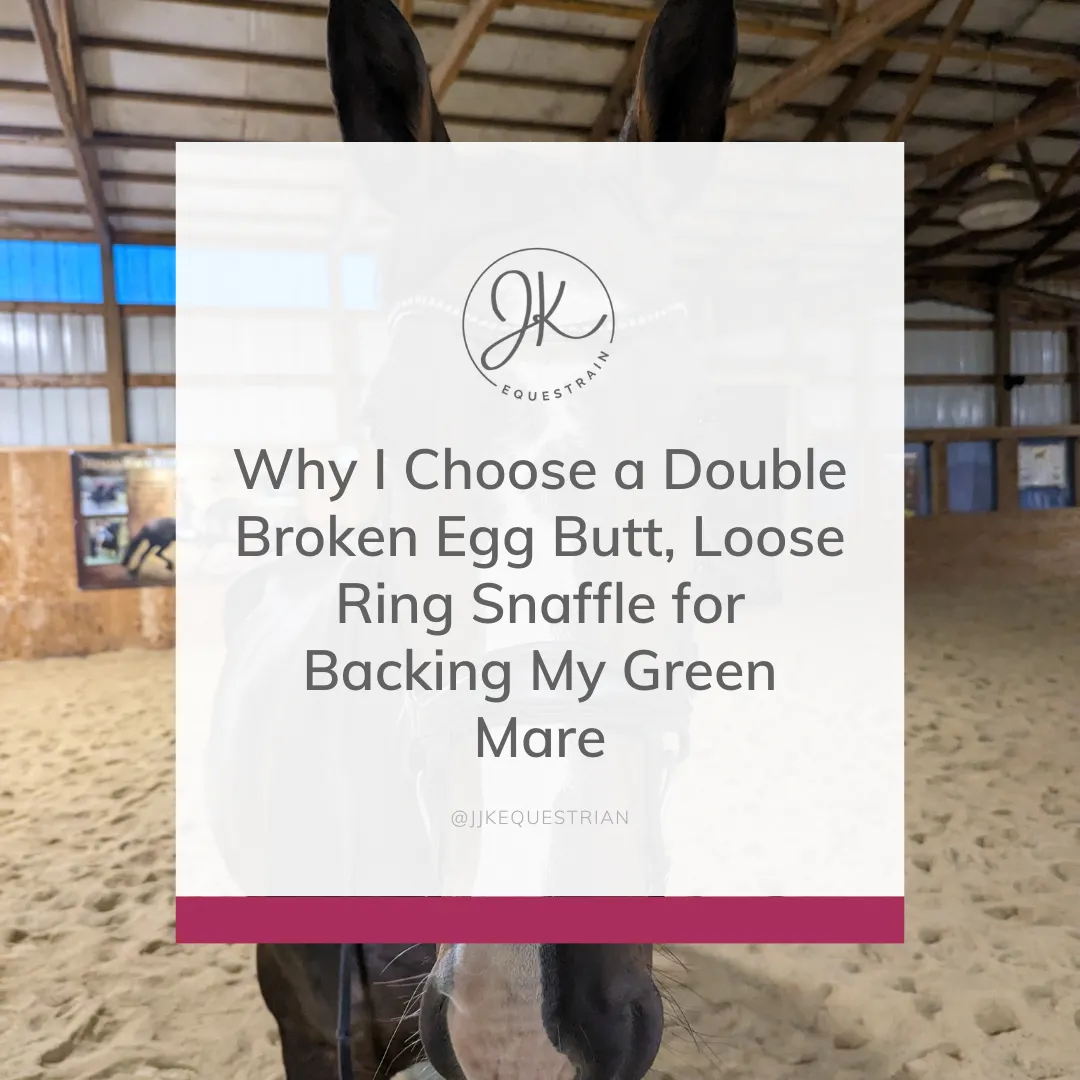JJK Equestrian Blog
Where Passion Meets the Saddle

Double Broken Egg Butt Loose Ring Snaffle
Backing a green mare is a pivotal moment, and selecting the right bit is crucial.
Here's why I opt for a double broken egg butt snaffle, along with the pros and cons, types, and detailed considerations for bit fit:
Pros:
Gentle Introduction: The double broken design offers a gentle introduction to bit contact for a young or inexperienced horse, minimizing the risk of discomfort or resistance.
Freedom of Movement: The egg butt snaffle's fixed cheekpieces provide stability and prevent pinching while allowing the bit to sit comfortably in the horse's mouth. This promotes freedom of movement and encourages acceptance.
Clear Communication: The double jointed mouthpiece provides clear signals to the horse without the severity of a single-jointed snaffle. It encourages salivation and acceptance of the bit.
Versatility: Egg butt snaffles are versatile and suitable for various riding disciplines, making them a valuable choice for foundational training.
Cons:
Limited Severity: While the gentle nature is an advantage, it can be a drawback for horses that require more precise cues or those with strong resistance tendencies.
Individual Preference: Bit selection often comes down to individual horse preference. Some horses may not respond well to the double jointed design and may require a different bit type.
Potential for Overuse: Due to its mild nature, there's a risk of riders relying too heavily on the double broken egg butt snaffle, missing opportunities to refine communication with more advanced bit types.
Types and Price Points:
Egg butt snaffles come in various materials, including stainless steel, sweet iron, and copper. Prices range from $20 for basic stainless steel versions to $100 or more for higher-end materials.
Basics of Bit Fit:
Width: Ensure the bit isn't too wide or too narrow, allowing for one to two wrinkles at the corners of the horse's mouth. A bit that is too wide may slide around, while a narrow bit can pinch.
Cheekpiece Length: The cheekpieces should be the right length to avoid pinching the horse's lips. Adjust them so that the bit sits comfortably in the horse's mouth without excessive movement.
Bit Height: The bit should be adjusted to sit at the right height in the horse's mouth, typically about one to two fingers above the corners of the mouth.
Regular Maintenance: Clean your bit regularly to remove dirt, saliva, and debris that can cause discomfort. Inspect for sharp edges or damage that may harm your horse's mouth.
Remember, bit selection and fit should always prioritize the comfort and well-being of your horse. Consult with an experienced trainer or equine professional for personalized guidance, especially when starting a young or green horse.
Building a strong foundation with the right bit is key to your mare's future training.
#BitChoice #GreenHorseTraining #EggButtSnaffle #EquineFoundation
Copyright ⓒ Kopac Enterprises LLC | 2024
Powered By TDMFunnels

